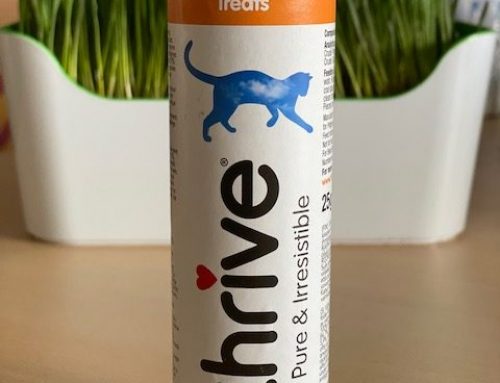What type of grass is best for cats?
As more UK cat owners become aware of the behavioural need for cats to eat grass, more owners are looking for a safe and easy to grow cat grass for their cats. But what types of cat grass are there? Which are safe? Which are easy to grow and best value for many? You may have also bought cat grass before and you’ve not been impressed with the results – this is most probably not your fault!
So what type of grass is best for your cat? Cat Grass is made from many different types of seed, many of which are safe for cats. However, there are a few things to think about when choosing which type of grass is best for you and your cat. To find out what type of cat grass is best for cats we’ll quickly answer some common questions and issues:
What types of cat grass are available?
With the development of commercial cat grass products manufactures have used a variety of seeds and types of cat grass. The range of cat grass products available has made knowing which type (or seed) of cat grass is best for your cat difficult to determine. So here’s our guide to buying different types or seed of cat grass so you can determine what type of grass is best for cats. The first thing to be made aware of is that in the UK cat grass is a pet food product under UK law. This means that any product sold as cat grass must (amongst other obligatory declarations):
- Declare the species of seed used in the product – so this should be clearly labelled for you on any advertising and on the packet. If not, do not buy it! avoid descriptions like “sweet” and “tall”
- Mixed types of seed products should be avoided as they cannot list the nutritional values of the product – a legal requirement on all packaging of pet food products
- “All pet food products should not cause harm to the animal for which it is intended” – so avoid small seeds awns as these can become lodged in the nasal cavity or roof of the mouth causing serious pain and costly vet bills
- Unfortunately most grow your own kits use North American “Winter Berry” or “Red Berry” wheat seeds which are difficult to grow in the UK and are prone to mould. As part of the agricultural process in the US and Canada the seeds are “bleached” to prevent mould developing. European seed suppliers emulsify their seed – finely spray the seed with a chemical to prevent mould & germination within the packaging. Both practices are illegal in the UK. Where possible always purchase from an organic, pet food manufacturer who puts their pet food manufacturer license number on their products which looks like this: GB-xxxxx-xxxx. My Cat Grass only uses seed from Organic Certified UK farmers with track and trace from supplier to customer.
What type of grass should I avoid?

Dactylis_glomerata_Habitus_Valderrepisa
Always avoid the following types of cat grass as they are not suitable for cats:
- Any and all lawn seed: The small seed awns can become lodged in your cats naval cavity or roof of their mouth
- Rye Grass:- If allowed to go to seed, Rye Grass has small seed awns and as such should never be sold as cat grass
- Cocks Foot – Dactylis Glomerata: This wild grass is commonly used for cattle fodder is found wild across the northern hemisphere. Although Cocks foot has the colloquial name “Cat Grass” it is almost like a pampas grass when it grows to seed with small seed awns. The grass also has spikelets on its leaves which are extremely dangerous for cats especially their eyes and mouths when attempting reach the youngest leaves
- Plant Grasses: Some plants are sold under the “cat grass” name however they are not suitable for domestic cats
- Nurseries/Garden Centre Cat Grass: There are many plants which are extremely poisonous to cats which is why ready grown cat grass should be grown in a safe environment where there is no chance of cross contamination by pollenating flowers and plants. For example, every part of the Lilly plant – which are prolific pollinators- are poisonous to cats. Purchasing your cat grass from a garden centre / plant nursery exposes your cat to potential poisoning which then cannot be treated – if possible – as you would not know the cause of the poison.
With these factors in mind the best types of cat grass are:
What type of grass is best for cats?
| Details / Variety | Spelt Wheat Grass | Barley Grass | Oat Grass |
|---|---|---|---|
| Colour | Dark Green | Medium Green | Very Light Green |
| Leaves | Lush, thick, broad leaves | Dense medium leaves | Tall thin leaves |
| Fibrous | Very Fibrous | Medium fibre | least fibrous, light leaves |
| Waxy | No | No | Yes |
| Good For Fur Balls | Best | Medium | Yes for sensitive cats |
| Increase Water Intake | Yes | Yes | Yes |
| Improves Intestinal Tract Motility | Best | Medium | Yes for sensitive stomachs |
| Sensitive Whiskers | Not Ideal | Yes | Best |
| Preferred by: | Cats absolutely love spelt wheat grass
Unique to My Cat Grass. Lush, fibrous grass, great for dealing with fur balls |
Popular alternative to Spelt Wheat Grass.
A great compromise between wheat and oat grass |
Great for cats with sensitive stomachs & whiskers.
Great for increasing intestinal motility |
| Where to Buy: | Premium Seed Pouches – Wheat Grow Your Own Kit – Wheat Ready Grown Cat Grass Trays – Wheat |
Premium Seed Pouches – Barley Grow Your Own Kit – Barley |
Premium Seed Pouches – Oat Grow Your Own Kit – Oat |
How easy is it to grow different types of cat grass?
| Details / Variety | Spelt Wheat Grass | Barley Grass | Oat Grass |
|---|---|---|---|
| Difficulty to germinate | OK if you water everyday | OK if you water everyday | Easiest |
| Time to Sprout | 4 – 6 Days | 4-5 days | 4 days |
| Time To Fully Grown | 10-12 days | 8 – 10 days | 8 – 10 days |
| Overall Ease to Grow | Requires patience but best results | Medium difficulty, medium longevity | Easiest but lasts shortest amount of time |
Will my cat prefer a particular type of cat grass?
If you’re a cat owner you’ll probably know by now just how individual every cat is! Whilst one cat may love sleeping away the day in your lap, the next maybe adventurous or another yet completely aloof. The same characteristics can be applied to a cats preference for each cat grass variety. Whilst a recent study showed 72% of cats eat grass more than three times a day, it unfortunately did not research which varieties they preferred. So what is the best type of cat grass for cats?
Of the three varieties we have looked at; Wheat, Barley and Oat. My Cat Grass (based on sales between 2018-2021) with a customer base of over 1.5k customers has found the most common varieties in order of popularity are;
- 1st Place: Spelt Wheat Grass,
- 2nd Place: Barley Grass
- 3rd Place: Oat Grass.
The results may be skewed by the fact that customers maybe purchasing based on the owners preference. Costs are the same for each variety across each format i.e. all varieties of seed are the same price, so price is not a factor in purchasing decision.
Most owners will purchase two to three seed pouches or kits at a time (one of each variety) to see which variety their cat prefers and then re-order the variety their cat seemed to (enjoy) eat the most, with returning customers as whole ordering each variety in the order listed above. Check out our best cat grass table here if you missed it.
What is seed viability?
Knowing what is the best type of grass for cats can sometimes come down to seed viability. But what is seed viability? Seed Viability simply means the percentage of seeds that will grow from the seeds in the packet into lush leaves of cat grass. This is important as this could effect your growing success resulting in a bald patch of wispy leaves – very uninspiring for your cat! Seed Viability is effected by:
- Best before date: Yes cat grass seeds expire
- Quality of seed: Is your cat grass kit as cheap as chips? it’s probably not using quality seeds and doesn’t have a manufacturer license
- Storage – cat grass seed need cool, dark, hermetically sealed storage
Always check the provided viability rate to ensure you aren’t purchasing/growing poor quality cat grass:
- Best Before Date: bulk manufacturers make a lot of cat grass seed packets or grow your own kits in one go – mass production equals cheaper costs. The issue is that these products then sit in production/wholesale warehouses, retail shelves and in customers homes before they are used. By the time you purchase the cat grass how much of the lifespan has already elapsed? My Cat Grass produces small batches and under estimate the lifespan of our seeds to ensure our seed has the highest viability rate possible.
- Quality of Seed: Cost really isn’t a good indicator as products can be easily overpriced. Check your product has track and trace back to the supplier, uses local seed suppliers – ideally within the UK and that the supplier is Organic certified and has a pet food manufacturer license
- Storage: Ensure your cat grass has been stored and sealed in packaging hermetically – with a zip and heat seal using moisture control packaging materials.
How can I tell if I am buying a legal and safe cat grass?
If you would like to know more about how to buy safe and legal cat grass you’ve come to the right place. My cat Grass is the only UK supplier of legally compliant, Pet food Grade cat grass. If you would like to know more about how to ensure you are buying UK legal cat grass including Animal Feed Law, Hygiene Law and Marketing Law that cover the production, sale and marketing of cat grass we have provided links to the legislation below. Whilst these links direct to the European legislation, all legislation were bought into UK law in 2005 under the governing body and authority of the Food Standards Agency. The links also provide information on the statutory statements and their obligatory declarations which must be placed on every cat grass product labelling. However a simplified version can be found on the Pet Food Manufacturers website here.
- Animal Feed Law Directive 178/2002 – on the principles of food and feed law
- Hygiene Law Directive 183/2005 – laying down requirements for feed hygiene
- Marketing and Bringing to Market Directive 767/2009- on the placing on the market and use of feed, labelling and marketeers such as auction & vendor sites
- Legal Clarifications on reformulation and animal feed production establishments – Advice on reformulations and labelling of animal feed in response to the coronavirus pandemic





